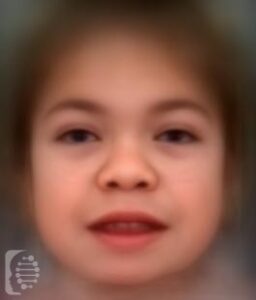What is Mucopolysaccharidosis Type VI (MPS6)?
Mucopolysaccharidosis Type VI; MPS6 is a rare genetic disorder and lysosomal storage disease. It is often also referred to as Maroteaux-Lamy Syndrome.
The disease may present at birth or later age. The syndrome is progressive but may progress at either a slow or fast rate depending on the type the individual develops.
This syndrome is also known as:
ARSB Deficiency; Arylsulfatase B Deficiency; Maroteaux-Lamy Syndrome; MPS VI; MPSVI Mucopolysaccharidosis type VI; N-acetylgalactosamine-4-sulfatase Deficiency
What gene change causes Mucopolysaccharidosis Type VI (MPSVI)?
The syndrome is a lysosomal storage disease caused by a deficiency of arylsulfatase B (ASB) caused by mutations in the ARSB gene on chromosome 5. The syndrome is a lysosomal storage disease affecting the body’s ability to break down the large sugar molecules known as glycosaminoglycans. The buildup of these molecules in the body tissue triggers the symptoms of the syndrome. It is inherited in an autosomal recessive pattern.
Autosomal recessive inheritance means an affected individual receives one copy of a mutated gene from each of their parents, giving them two copies of a mutated gene. Parents, who carry only one copy of the gene mutation will not generally show any symptoms but have a 25% chance of passing the copies of the gene mutations onto each of their children.
What are the main symptoms of Mucopolysaccharidosis Type VI (MPSVI)?
Symptoms of the syndrome included enlarged and scarred tissues and organs.
Other possible health conditions related to the syndrome include skeletal abnormalities and short stature, failure to thrive, and possible cardiac and pulmonary diseases.
The syndrome’s physical features include a broad, flat nose bridge, a prominent forehead, coarse facial features, and a thick lower lip.
Clouding of the cornea is a fairly common syndrome, as is degenerative joint disease.
Possible clinical traits/features:
Thick lower lip vermilion, Macrocephaly, Anterior wedging of L2, Umbilical hernia, Recurrent upper respiratory tract infections, Splenomegaly, Cognitive impairment, Depressed nasal bridge, Genu valgum, Glaucoma, Metaphyseal irregularity, Opacification of the corneal stroma, Hepatomegaly, Short stature, Hearing impairment, Hydrocephalus, Hirsutism, Hip dysplasia, Hernia, Kyphosis, Hypoplastic iliac wing, Hypoplastic acetabulae, Hypoplasia of the odontoid process, Visual impairment, Anterior wedging of L1, Mucopolysacchariduria, Cardiomyopathy, Broad ribs, Cervical myelopathy, Abnormal heart valve morphology, Abnormality of epiphysis morphology, Abnormality of the ribs, Abnormality of the nasal alae, Abnormality of the tongue, Short neck, Sinusitis, Otitis media, Ovoid vertebral bodies, Autosomal recessive inheritance, Prominent sternum, Coarse facial features, Dysostosis multiplex, Limitation of joint mobility, Split hand, Epiphyseal dysplasia, Disproportionate short-trunk short stature, Dolichocephaly.
How is it diagnosed?
To find out if someone has a diagnosis of Mucopolysaccharidosis Type VI (MPS6), it is important to have a consultation and evaluation with a clinical genetic specialist. Specialists may also suggest specific genetic testing or other types of tests to help reach a diagnosis. FDNA’s AI technology can help speed up the diagnostic process by analyzing facial features and other health information.


